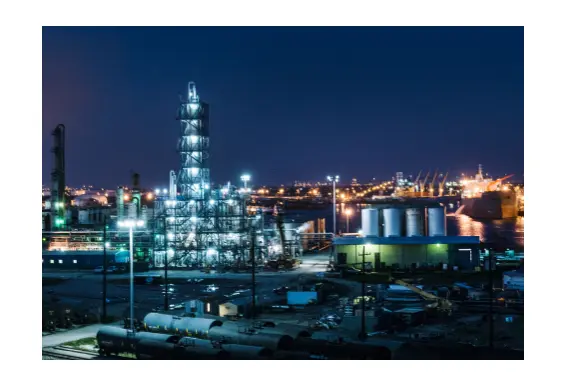CO2 Storage Operations
About the eLearning Course
This eLearning course investigates well construction, storage surface facilities, baseline data and storage monitoring, injection operations, and post injection operations. A high-level review of each topic is discussed, including elements unique to subsurface geologic storage and properties of CO₂. Well construction describes the unique features of storage wells, including corrosion concerns and long-term monitoring equipment. The importance of significant baseline monitoring data and examples of monitoring plans are described to ensure permanent storage effectively.
Target Audience
Designed for technical or non-technical audiences, including engineers, geoscientists, finance, accounting, and operations professionals who want a basic understanding of the project life cycle, the fundamentals of CO2 capture and technology readiness, and transportation options.
You Will Learn
- Define the key components of the CCS value chain: capture, transportation, and storage
- Explain how the continuous learning cycle improves CO₂ storage system understanding
- Describe the materials and design features required for CO₂ storage injection wells
- Summarize the importance of monitoring wells for detecting anomalies in CO₂ injection zones
- Understand the various operational aspects of CCS projects, such as data requirements, cased hole logging, injection tree design for CO₂ wells, and CO₂ elastomer challenges
- Identify the key interfaces upstream and downstream of the surface facilities that must be defined to initiate the facility design
- Identify the key surface equipment needed within the storage field and the related monitoring elements
- Describe the data needed to properly size flowlines
- Explain the critical role of metering in CO₂ storage operations, including the importance of accurate measurement for custody transfer, injection rate monitoring, and carbon credit monetization
- Explain the importance of baseline data in the context of monitoring CO₂ injection operations
- Identify the various monitoring techniques used for atmospheric, near- surface, and subsurface monitoring
- Discuss the four types of monitoring activities that take place during CO₂ injection operations – mechanical integrity, subsurface leak detection, plume monitoring, induced seismicity
- Describe the advantages and disadvantages of vertical seismic profiling and 4D seismic as a monitoring tool
- Explain the key differences between the three types of monitoring wells and why each one is used
- Explain an operating philosophy is needed to develop an effective surface facility design and how it influences staffing, automation, monitoring, data management, maintenance, and emergency response decisions in CCS operations
- List the safety considerations for managing CO₂ injection operations, such as training, dispersion models, and emergency response plans
- Understand how the elements of an emergency response plan, such as the ICS, are designed to predict hazards and coordinate responses during emergencies
- Describe the use of HAZOP and how it helps to reduce risk and improve operability
- Summarize the importance of post-injection monitoring infrastructure in ensuring the long-term safety and stability of CO₂ storage sites
- Describe the primary differences between active injection monitoring and monitoring post-injection
- Identify the key variable used to end post-injection site care and close the project
Course Content
- Elements of CO₂ Well Construction
- CO₂ Storage Facilities Design
- CCUS Baseline Data and Storage Monitoring
- Operational Philosophy and Safety in CCS Injection Operations
- Post-Injection Monitoring in CO₂ Storage Operations




